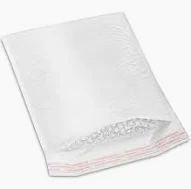Transparent Stretch Film for Packaging and Protection of Various Items
The Versatility of Transparent Plastic Wrapping and Stretch Film
In today's fast-paced world, the importance of effective packaging cannot be overstated. Whether for industrial, commercial, or residential use, packaging is crucial not only for protecting products but also for enhancing their presentation and facilitating storage. Among the myriad of packaging solutions, transparent plastic wrapping and stretch film have emerged as versatile options, meeting a wide range of needs across various sectors.
Understanding Transparent Plastic Wrapping and Stretch Film
Transparent plastic wrapping, often referred to as cling film or saran wrap, is a thin plastic film made from polymer materials. It is designed to tightly adhere to surfaces and objects, preserving freshness and providing protection from external contaminants. Stretch film, on the other hand, is a thicker, more durable plastic film that is specifically engineered to stretch and conform to the shape of the product being wrapped. It is commonly used in palletizing products for shipment, as it secures loads together and minimizes the risk of damage during transportation.
Both transparent plastic wrapping and stretch film offer significant advantages due to their lightweight, flexibility, and ability to provide an airtight seal. These features ensure that products remain protected from moisture, dust, and other potentially harmful elements.
Applications in Various Industries
1. Food Industry One of the most common uses of transparent plastic wrapping is in the food industry. Cling film is frequently employed to cover foods, preventing air exposure and thereby extending freshness. It is particularly popular in restaurants and kitchens for wrapping leftovers or catering platters. Stretch film, on the other hand, is used for bulk packaging, ensuring that wrapped foods remain intact during storage and transportation.
transparent plastic wrapping stretch film

2. Retail and E-commerce In retail, both forms of plastic wrapping are essential. Products need to be displayed appealingly while being protected from environmental factors. Transparent wrapping allows customers to see the product, while stretch film secures items for shipping, minimizing movement during transit and thereby reducing damage rates.
3. Industrial Applications In manufacturing and industrial sectors, stretch film plays a pivotal role in shipping and load stabilization. It is used to wrap pallets of products, ensuring that they stay together during handling and transportation. The ability of stretch film to extend makes it adaptable to various packaging scenarios, allowing for a snug fit around different shapes and sizes.
4. Home Use In our homes, transparent plastic wrapping is a staple for food preservation, while stretch film can be utilized for various DIY projects and storage needs. It can wrap furniture for moving, protect surfaces during painting, or even secure objects together.
Environmental Considerations
While transparent plastic wrapping and stretch film offer remarkable benefits, they also present environmental challenges. The majority of these products are made from plastic, contributing to the global issue of plastic waste. However, manufacturers have recognized this problem and increasingly focus on producing recyclable and biodegradable options. Innovation in materials has led to the creation of eco-friendly stretch films made from renewable resources, thus helping to reduce the environmental impact.
Conclusion
Transparent plastic wrapping and stretch film have become indispensable tools in various industries, serving multiple purposes from food preservation to industrial packaging. Their versatility, ease of use, and ability to provide effective protection make them valuable resources. As we continue to innovate and seek sustainability in packaging solutions, the development of eco-friendly alternatives will further enhance the functionality of these materials while addressing environmental concerns. As consumers and industries alike adapt to the need for responsible packaging, transparent plastic wrapping and stretch film will likely continue to evolve, cementing their place as essential components in the world of packaging.
-
The Best Uses for Small Trash Bags in Daily LifeNewsJul.01,2025
-
Stylish Reusable Grocery Bags TrendsNewsJul.01,2025
-
Shipping Advantages of Using Bubble Envelopes BulkNewsJul.01,2025
-
How Compostable Mailing Bags Reduce Environmental ImpactNewsJul.01,2025
-
Environmentally - Friendly Bulk Poly MailersNewsJul.01,2025
-
Eco Friendly Custom Laminated Tote BagsNewsJul.01,2025
-
Have the freedom of customizing your custom mailers any way you want! Our dedicated packaging support will help deliver you the mailing experience you need to elevate your shipping experience to the next level! Start making a strong impression on your customers and stand out from your competitors! -
LIYA uses high quality raw materials which directly purchased from large enterprises domestic and overseas such as PetroChina, Sinopec, Sabic, Equate, ExxonMobil, Dow Chemical, Total, and Borouge, ensuring the price advantage and quality of the raw materials. -
LIYA uses high quality raw materials which directly purchased from large enterprises domestic and overseas such as PetroChina, Sinopec, Sabic, Equate, ExxonMobil, Dow Chemical, Total, and Borouge, ensuring the price advantage and quality of the raw materials.





